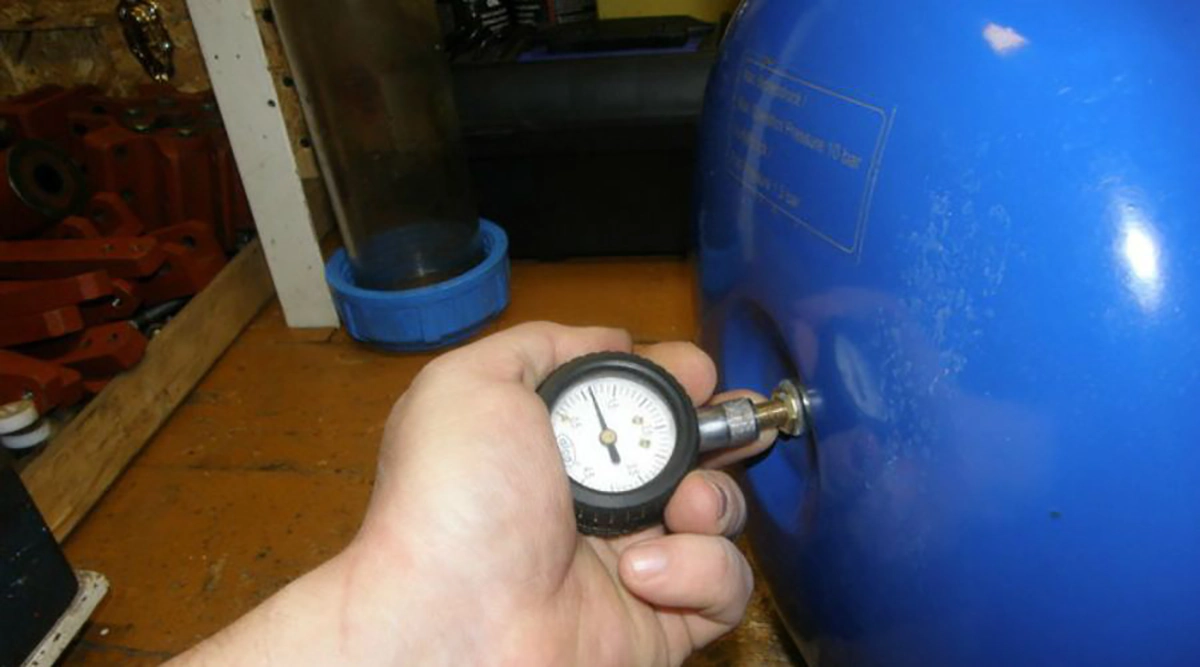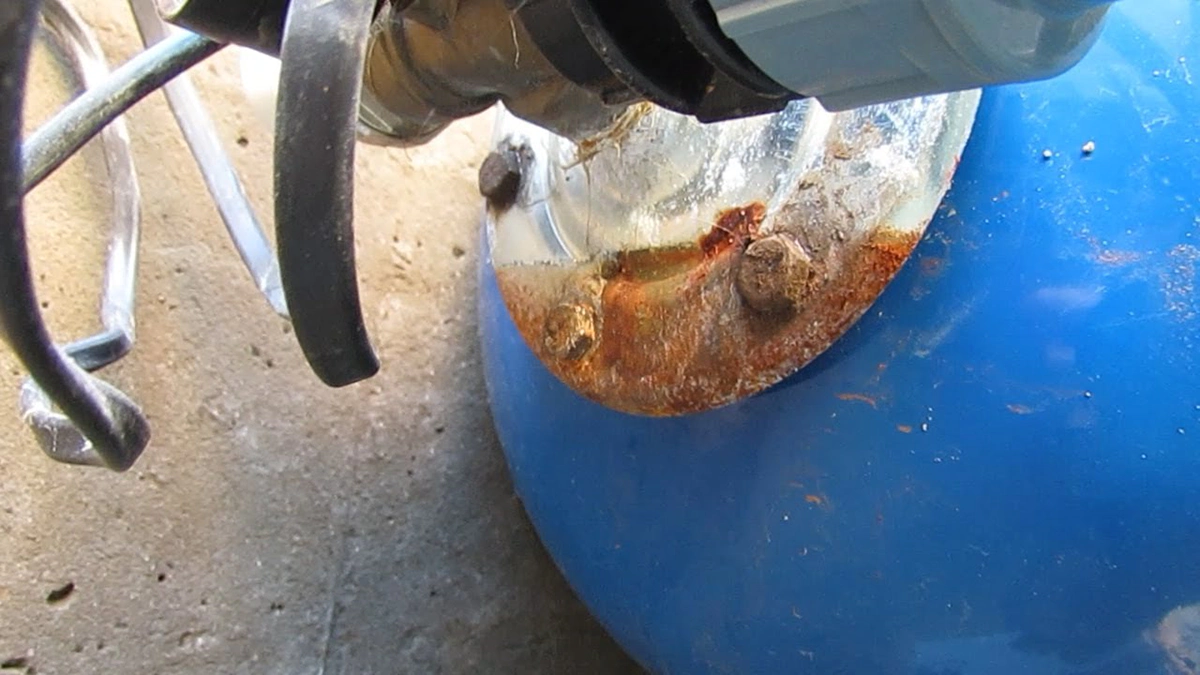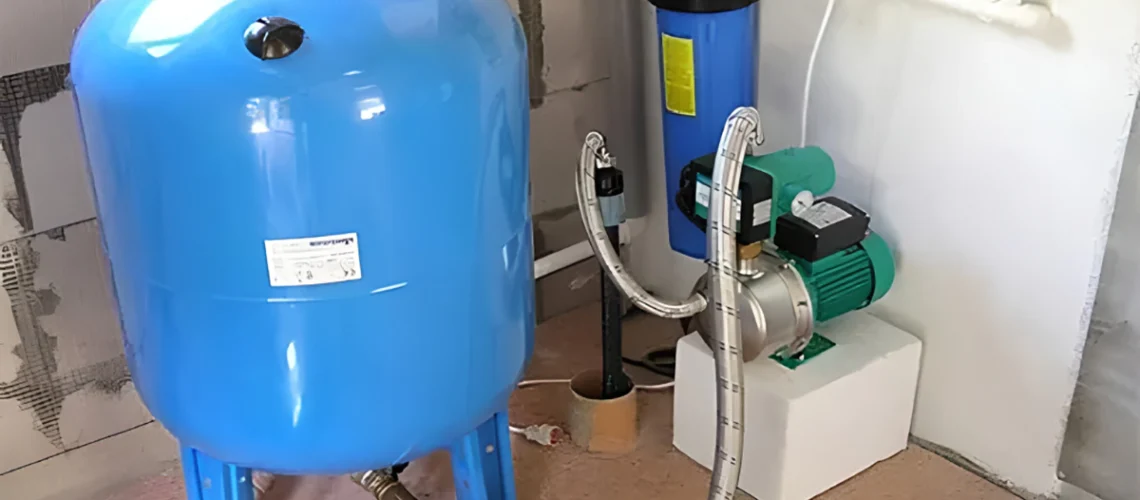A water pressure tank plays a critical role in keeping your home’s water system running smoothly. It stores pressurized water from your well or main supply and helps maintain consistent water pressure. When the pressure tank is not filling up with water or there’s no pressure in the water tank, it can interrupt your daily water use and signal underlying mechanical issues.
Understanding what causes these water pressure tank problems and how to fix them can save you from costly repairs and downtime.
Contents
- 1 Common Signs of Water Pressure Tank Problems
- 2 Why Your Pressure Tank Is Not Filling with Water
- 3 Water Tank No Pressure but Pump Runs
- 4 Other Common Water Pressure Vessel Problems
- 5 How to Troubleshoot Water Pressure Tank Problems Safely
- 6 When to Call a Professional Plumber
- 7 Final Thoughts
- 8 Frequently Asked Questions
Common Signs of Water Pressure Tank Problems
Before troubleshooting, it’s important to recognize the signs of trouble in your system. You may have a pressurized water tank problem if you notice:
- Faucets spitting air or fluctuating water flow
- The well pump cycling on and off too frequently
- Water pressure dropping suddenly
- No water coming from taps at all
Each of these symptoms points to different pressure tank problems that can develop over time due to leaks, low air charge, or internal damage.
Why Your Pressure Tank Is Not Filling with Water
When there’s no water in your pressure tank, it means the system isn’t maintaining the proper balance between water and air. Here are the most common causes.
1. Faulty Pressure Switch
The pressure switch controls when the well pump turns on and off. If it fails or becomes clogged with debris, the pump won’t activate — leaving the pressure tank empty.
Fix: Check the switch contacts for corrosion or dirt, clean them gently, and replace the switch if it no longer responds to pressure changes.
2. Broken or Failing Well Pump
If your well pressure tank is not filling at all, the pump itself could be at fault. A burned-out motor, damaged impeller, or broken wire may stop it from drawing water.
Fix: Listen for the pump when you turn on a faucet. If you hear no sound, test the circuit breaker or contact a licensed plumber to inspect the pump.
3. Air Charge or Bladder Failure
Inside most water pressure tanks is a rubber bladder or diaphragm that separates air from water. Over time, this bladder can rupture, causing no pressure in the water pressure tank.
Fix: Tap the outside of the tank — a hollow sound on top and a dull thud on the bottom is normal. If it sounds solid throughout, the bladder is likely waterlogged and must be replaced.

Water Tank No Pressure but Pump Runs
If the pump is running but you still have no pressure in your water tank, several issues may be to blame.
1. Clogged Intake or Pipe Blockage
Sediment buildup or mineral scaling can restrict water flow into the tank. This is common in older well systems.
Fix: Inspect the intake pipe and filters for debris. Flushing the lines or replacing a clogged filter can restore flow.
2. Check Valve or Foot Valve Malfunction
These valves prevent water from flowing backward into the well. When they fail, water drains out of the tank each time the pump stops, leading to no water pressure when you turn on a tap.
Fix: Have a plumber test and replace any faulty check or foot valves to prevent backflow.
3. Incorrect Pressure Setting
If the cut-in and cut-out pressures are not calibrated correctly, the system may not build sufficient pressure.
Fix: The cut-in pressure (when the pump starts) is usually 2 psi below the tank’s air charge. Adjusting the settings properly ensures smooth operation.
Other Common Water Pressure Vessel Problems
Not all water pressure tank troubleshooting is about the pump or switch. Some issues develop inside the vessel itself.
1. Internal Corrosion or Rust
Metal tanks can corrode internally, especially if used with hard water or without protective coatings. This leads to leaks and loss of pressure.
Fix: Replace severely corroded tanks and install a water softener or filtration system to reduce mineral buildup.
2. Leaking Connections or Fittings
Loose joints, cracked pipes, or worn seals around the tank can cause water tank pressure problems and air leaks that reduce performance.
Fix: Tighten or reseal fittings and replace damaged parts immediately to prevent pressure loss.
3. Faulty Pressure Gauge
Sometimes the issue isn’t with the system but with the gauge itself showing incorrect readings.
Fix: Compare gauge readings with actual pressure using a tire gauge on the air valve. If the numbers differ significantly, replace the faulty gauge.

How to Troubleshoot Water Pressure Tank Problems Safely
Before performing any water tank troubleshooting, always turn off the power to the pump. Then follow these steps:
- Check the air pressure in the tank using a standard air gauge.
- Verify that the pressure switch is functioning and set to the correct range.
- Inspect all fittings and valves for leaks or rust.
- Drain the tank and refill it to check whether it’s holding pressure properly.
- If the tank fails to build pressure after refilling, call a professional plumber for diagnosis.
Attempting to repair electrical or well pump components without experience can cause further damage or pose safety risks.
When to Call a Professional Plumber
Minor water pressure tank problems can sometimes be fixed with cleaning or adjustment, but recurring pressure drops, electrical faults, or no water in the pressure tank require expert help.
Licensed technicians like POM Plumbing specialize in well water pressure tank troubleshooting and can quickly identify whether the problem is mechanical, electrical, or structural. They’ll inspect your system, replace faulty components, and ensure safe, code-compliant operation.
Final Thoughts
A pressure tank not filling up with water isn’t just an inconvenience — it’s a sign that your water system needs attention. From air bladder failure to faulty switches or pump issues, diagnosing the cause early can prevent serious damage.
If you’re dealing with low pressure, no water, or constant pump cycling, don’t ignore the warning signs. Contact POM Plumbing for professional water pressure tank troubleshooting across Toronto and the GTA. Their experts will restore consistent pressure, extend your tank’s lifespan, and keep your home’s water system running reliably.
Frequently Asked Questions
A well-maintained water pressure tank typically lasts between 10 and 15 years. However, the lifespan can vary depending on water quality, usage, and tank type. Tanks in areas with hard water or high mineral content may corrode faster. Regular inspections and pressure checks help extend the service life.
When a pressure tank loses air, it can’t maintain proper pressure balance. The pump will start cycling on and off frequently — a condition known as “short cycling.” This increases wear on the pump motor and can eventually lead to failure. Recharging the air or replacing a damaged bladder usually solves the issue.
Older-style tanks didn’t use bladders, but modern pressurized water tanks rely on them to separate air from water. If the bladder ruptures or fails, the air mixes with water, leading to pressure loss and waterlogging. Replacing the bladder or the entire tank is the best long-term solution.
Constant water pressure fluctuations usually mean that the pressure switch or check valve is malfunctioning. Inconsistent power supply to the well pump can also cause pressure swings. A plumber can test these components and reset the cut-in/cut-out levels to stabilize your system.
No. Operating a system with low water pressure can overwork your pump and cause further damage. It may also indicate leaks or air loss inside the tank. The sooner you troubleshoot or call a professional, the less likely you’ll face pump burnout or contamination from backflow.
Turn off the pump and tap the tank gently from top to bottom. A healthy tank sounds hollow at the top and solid at the bottom. If it sounds solid all over or feels unusually heavy, it’s likely waterlogged — meaning the bladder has failed or too much water has filled the chamber.
If your well water pressure tank isn’t filling or holding pressure, contact a licensed plumber like POM Plumbing. Professionals have the tools to safely test the switch, pump, and tank components, locate leaks, and restore consistent water pressure without risking electrical or mechanical damage.



